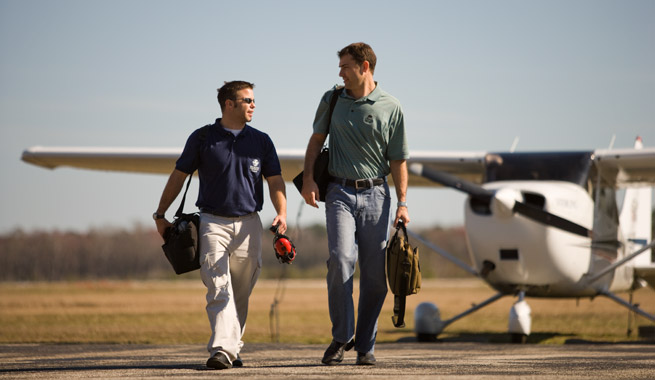Learning a foreign language is a rewarding experience that opens new windows of culture, opportunity, and friendships. Yet, the most frequently searched query among language learners is, "How long will it take?" It's a difficult answer to give, since it depends on so many things like the learner's objective, the language's complexity, previous experience, study method, and dedication.
This article discusses these variables, offers projected timelines based on standard models, and offers practical guidance to maximize your language-learning process.
Variables That Affect Language Acquisition
1. Language Difficulty
There are certain languages that are harder to learn compared to others, particularly when one considers the native language. The United States Department of State's Foreign Service Institute categorizes languages into four levels of difficulty for native English speakers:
- Category I: Closely related English languages, Spanish, French, and Italian, which require approximately 24–30 weeks (600–750 hours) to achieve the level of working professional.
- Category II: Moderately distinct languages, for instance, German, and approximately 36 weeks (900 hours).
- Category III: Either linguistically or culturally distinct languages, Russian, Hindi, or Thai, which require approximately 44 weeks (1,100 hours).
- Category IV: Languages that have complex grammar, unique scripts, or tones, like Arabic, Chinese, Japanese, or Korean, and need 88 weeks (2,200 hours).
For native non-English speakers, difficulty is relative. Spanish would most likely be easier to learn for a Spanish speaker than for a Chinese speaker who wants to learn Portuguese.
Read more: Top 5 Languages English Speakers Can Learn With Ease
2. Learner's Goals
The amount of time is going to depend upon the level you have in mind. The Common European Framework of Reference for Languages (CEFR) suggests six levels: A1 (beginner), A2 (elementary), B1 (intermediate), B2 (upper-intermediate), C1 (advanced), and C2 (near-native). You will find an approximate number of hours to achieve each of these levels at a Category I language (for instance, Spanish) for English native speakers listed below:
- A1–A2: 90–180 hours (a restricted amount of communication with basic sentences).
- B1–B2: 400–600 hours (spontaneous fluency, managing in most everyday situations).
- C1–C2: 800–1,200+ hours (professional or near-native ability).
If at the worst you need elementary holiday phrases, you might need only 50–100 hours, but academic or professional fluency will take much more.
3. Previous Language Experience
If you’ve learned a language before, especially one related to your target language, you’ll likely progress faster. For instance, knowing French can accelerate learning Spanish due to shared vocabulary and grammar. Multilingual learners also develop better language-learning strategies, such as pattern recognition or mnemonic techniques, which streamline the process.
4. Learning Environment and Immersion
Immersions are revolutionary. Living in a country where the language is naturally spoken puts you in a world of constant practice, immersion in the culture, and real-life situations. A Spanish student studying Spanish in Spain for three months will learn to speak fluently faster than one studying weekly at home. Immersion is not a recipe for success that works overnight and pays off without regular effort—talking with natives, reading, and speaking every day are needed.
Read more: Bright Futures Scholarship Requirements: A Guide For Florida Students
5. Consistency and Duration of Study
Your regularity and the number of hours you study per day all contribute significantly to improvement. The daily hour for 365 days is better than the sporadic, all-day marathon due to the benefit of spreading repetition and consistent practice. Quality also counts—active, alert learning (e.g., speech exercises or interactive software) is more valuable than passive learning like television watching with no subtitles.
6. Personal Skill and Motivation
There are some individuals who just "get" languages, phrases or rules of grammar in an intuitive way. Motivation exists as well. Why in the first place? Is it for work, traveling, or interest in a hobby? Intrinsic motivation permits long-term commitment, whereas outside factors (i.e., tests) are short-term achievers and burnout-makers.
Estimated Timelines for Language Acquisition
Based on FSI and CEFR models, the following is an approximate timeline for English-speaking learners to learn different languages with 10 hours of consistent study per week:
Spanish (Category I)
- A1–A2: 9–18 months (90–180 hours).
- B1–B2: 3–5 years (400–600 hours).
- C1: 6–8 years (800+ hours).
German (Category II)
- A1–A2: 12–20 months (120–200 hours).
- B1–B2: 4–6 years (500–700 hours).
- C1: 7–9 years (900+ hours).
Japanese (Category IV)
- A1–A2: 20–30 months (200–300 hours).
- B1–B2: 7–10 years (1,000–1,500 hours).
- C1: 12–15 years (2,000+ hours).
These are formal study or classroom-style. Immersion or intensive (e.g., 20–30 hours/week) will cut them in half. For example, one year of total Japanese immersion may render you B1-level Japanese.
Practical Tips to Accelerate Language Learning
Despite varying timelines, you may accelerate the learning process using these tips:
-
Set Clear, Realistic Goals
Define "fluent" to yourself. Perhaps you aspire to be able to order food, attend business meetings, or read novels. Break your goal down into milestones (e.g., "Learn 500 words in three months") so that you stay committed. -
Blending of Resources
Employ a blend of resources as follows:
- Apps: Duolingo, Babbel, or Anki for vocabulary and grammar.
- Media: Listen to audiobooks, films, or podcasts in your target language for listening and comprehension practice.
- Language Exchange: Tandem or HelloTalk match you with native speakers for speaking practice.
-
Begin Speaking Early
Don't wait until you're "ready" to speak. Practice speaking with native speakers or teachers on sites like iTalki or Preply. Even incidental interactions build confidence and reinforce learning. -
Take Immersion Home
If you're unable to travel, create an immersive environment:
- Alter phone or computer language settings.
- Label objects within the home with their names in the desired language.
- View social media pages or subscribe to YouTube channels in the language.
-
Leverage Spaced Repetition
Use flashcards or programs like Anki to repeat vocabulary and grammar at optimal times, for long-term retention. -
Be Routine
Even 15–30 minutes a day can be beneficial in the long run. Prioritize study time and take it as a non-negotiable appointment. -
Welcome Errors
Errors are a part of the learning process. Native speakers value effort more than perfection, so don't stifle speaking or writing because of fear of errors.
Frequently Broken Myths
-
"You have to be young to learn a language." While children will pick up the accent more rapidly, grown-ups are grammatical prodigies and systematic learners. Grown-ups may acquire fluency with diligence, research shows.
-
"Immersion guarantees fluency." Immersion is helpful, but passive exposure (e.g., living abroad without speaking) won't do. Active participation is the key.
-
"You need to be linguistically gifted." Temperament is short of persistence and routine. It is possible for anybody to learn with an appropriate method.
Conclusion
The amount of time it takes to master a language is extremely variable, from a few months to be proficient in an "easy" language to more than a decade in order to achieve advanced fluency in a hard language. The way is dependent on language difficulty, study effort, immersion, and personal ability. By making clear objectives, using different resources, consistent practice, and tolerating errors, you can gain as much as possible and have fun. Language learning ultimately isn't as much about the end as it is about enjoying what you see along the way. Begin today, and you'll be surprised how far you can go.


.jpg)










